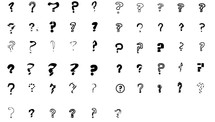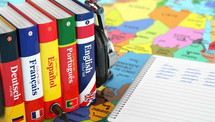Least Spoken Languages in the World
You might likely know some of the most spoken languages in the world that account for hundreds, millions, or even billions of speakers. Such languages would, of course, include Mandarin Chinese, Spanish, English, French, etc. At the same time, you might know about so-called dead languages, such as Latin, that are not spoken outside medicine anymore for thousands of years. Yet, what about the languages that are still spoken, but only by a few people, from a few to just a couple of dozens? Believe it or not, but there are languages that are gradually dying and that need to be saved urgently. Some of the least spoken languages in the world account for only a few total speakers, between 1 to 5, and in many cases, those survivors cannot pass their knowledge further because of the lack of literacy in the region.
What is Language?
Before we go further discussing endangered languages, it is important to first have a full understanding of what can be considered a language and what can’t. According to the Cambridge Dictionary, language is a system of communication used by people in a particular country or region. Such a system includes its own specific set of words, the vocabulary, phonetic system, sounds, and grammar. So, language is an autonomous and independent system, in which all of the listed elements are unique to that specific language. In contrast, there are also dialects that are only forms of certain languages and that borrow all elements from them, adding only a couple of specific words and grammar rules.
It is very important to highlight this difference when defining the vanishing languages in particular. Just like languages, many dialects go extinct too, yet, the impact of this process is significantly lower and there are chances to restore them as the reasons that dialects disappear are often different. The languages usually die because all native speakers of that language die and the rest of the region adapts different languages. Yet, dialects disappear when they blend with the main language of the country or are not needed anymore, because their scope contains the concepts that became archaic with time, for the most part. So, when the dialects go extinct, the overall richness of language might or might not be affected, while the death of the language means its complete disappearance with little to no chances of turning back. So what are the least common languages? Still, before getting to that, let’s see how many languages are there in the first place.
World Languages and Why Do They Die
With over 7 billion people living on planet Earth, the number of languages cannot be limited to a few hundreds, of course. In fact, today, the world accounts for over 7,000 languages, each containing at least a dozen dialects. So, the ways to communicate are many in the world. Some of the languages have become so widespread that we sometimes don’t even think that there are others. Finding French translation services, for instance, or a Spanish translation agency today requires little to no effort. Many other languages, however, do not follow suit, unfortunately.
Some other languages continue to go extinct, with the most affected areas being those far from the cities and towns. As of 2020, about 40% of the languages are endangered with only up to a thousand speakers left. But why do those uncommon languages disappear? Aren’t they passed down from generation to generation? Aren’t there any records that can keep the language alive?
Well, in most cases, the answer to the last two questions is yes, however, oftentimes that does not save the language. As the local languages are passed down to younger generations, those generations often move from rural areas of the country. Their new places of living become cities and towns, and most of them usually adapt to the official language of the country, which is either institutional or stable. While stable languages are adapted in all forms of human activity, the stable languages are taught to all people from younger generations in the country or at least to the majority of them. So, by moving to urban areas and adapting the stable languages, the younger generations from small local communities gradually stop using their specific native language making it the least common language as the time goes on.
Restoring Dead Languages
The truth is languages can be restored, although this requires an enormous work of linguists, translators, and historians. On top of that, this process usually takes place during the extinction of the language, not after it. As such, when such languages as Hawaiian or Maori were becoming unpopular, the governments of the corresponding countries would immediately allocate all the needed resources to preserve this inalienable element of the local culture. But what is the situation today? Let’s finally dive into the list of such languages that account for less than 1,000 speakers and find out which one is the rarest.
Read also: Reviews of the best Portuguese document translation services to help you receive accurate translations.
Rare Languages Around the World
Sarsi
Also spelled Sarcee, the language belongs to that of the Native American tribes. Considered to be one of the languages of Navajo, the language is relatively widespread, with about 170 speakers living around the territory of Calgary, Canada. Only the fact that some of the elders insistently pass the language down to younger generations manages to save Sarcee.
Paakantyi
One of the dying languages today can be found on an Australian continent, with only about 40 total speakers left, most of which are elders. Yet, many of them live in the Australian biggest state of New South Wales, so the linguists are currently working to preserve Paakantyi by reintroducing it in some of the schools.
Ongota
Being another least used language, Ongota is spoken only by about 10 elderly people in Southwestern Ethiopia. Some of the reasons the language gradually dies today is because it’s not learned by new generations and because the only tribe speaking the language was gradually consumed by another one.
Sa'och
Once a relatively spread and autonomous regional language of Cambodia, Sa’och accounts for only 10 to 20 living speakers. One of the major reasons why this language goes extinct is the Khmer Rouge communist regime that took a toll on many people’s lives, including those speaking Sa’och, in the late 1970s.
Ute
This language goes by many other names, among which are Southern Paiute, Chemehuevi, and Colorado River Numic language. With only a couple of hundreds of total speakers who mostly include researchers, the language accounts for only 20 native speakers, making Ute one of the least spoken languages in the world. Like with other Indigenous languages of the Americas, this language disappears because most of its native speakers are above 70 years old.
Liki
Spoken in the Papua region of Indonesia, Liki accounts for up to 10 speakers as for today. Being a rather widespread language in the region, Liki was mostly used by the local Indigenous church leaders, yet, has lost its relevance as the culture of Papua was affected by globalization, along with the rest of Indonesia.
Njerep
Being spoken on a very limited territory of a distant region in Cameroon, Njerep language accounts for only 4 living speakers, all of which are above 60 years of age. Like with many other regional languages, Njerep is dying out because of the younger populations preferring other Bantoid languages predominant in the region as well as French, which is one of the official languages of Cameroon.
And now, moving on to the absolute anti-leaders of the languages that go extinct in terms of speakers.
What is the Least Spoken Language in the World?
The languages considered to be endangered or being on the brink of extinction account for only 1 or 2 remaining speakers or rememberers. Although there is a vast number of such languages, in fact, we present only three here. They are perhaps the most known and thus, despite having tiny chances of survival can still be saved given the right effort and time.
Kaixana
The language used in the Japura River region in Brazil had only one speaker left prior to 2017. Yet, the language is no longer considered active by UNESCO Atlas, meaning that it might have already died along with its only user. Once being rather popular, the language has gone extinct due to its status of a tribal language. As the tribe became fewer in number due to colonization, urbanization, and globalization, the language gradually became one of the rarest languages in the world or even disappeared whatsoever.
Tolowa
The language of the Native American tribe of the same name, Tolowa is also spoken by only one elderly person. Although the population of the tribe is relatively high, the majority of its members speak other languages that were historically present in the historical regions of modern-day California and Oregon.
Taushiro
Taushiro, being the least known language, is spoken by only one person in Peru named Amadeo Garcia Garcia. Due to being largely isolated and tribal, the language gradually became almost entirely extinct. Luckily, the government of Peru became aware of this, and currently, linguists actively work with Garcia to preserve this perhaps least common language.
Currently, the endangered languages are many, yet, oftentimes, the effort made to preserve such a language is devastatingly little. As a result, languages disappear forever. The table below demonstrates those that have to be in priority for the world’s governments and language organizations.
|
Language |
Number of Speakers |
Region |
|
Taushiro |
1 |
Tigre River Region, Peru |
|
Tolowa |
1 |
Oregon, U.S. |
|
Kaixana |
1 |
Japura River Region, Brazil |
|
Njerep |
4 |
Adamawa Region, Cameroon |
Efforts to Save the Languages
As the number of languages that are about to extinct is considerably high and this number is rising, many organizations were formed around the world to preserve them at least partially. Some of the predominant programs act in the most affected regions, Sub-Saharan Africa, and the Americas.
As such, the Endangered Languages Documentation Program supported by several linguistic organizations in Great Britain, works mostly with Sub-Saharan rarest languages, one of which is Ongota. In fact, this language is perhaps the most successful project of the program so far. One of the program’s researchers managed to record enough of the audio of the spoken language to further produce a documentary about it and spread awareness about Ongota and disappearing languages overall.
At the same time, the American Indian Museum Services constantly work on preserving the Indigenous languages of America by researching, recording, and spreading awareness about such languages. Funded mostly by private organizations, the program is rather successful accumulating a considerable number of audio and written recordings from nearly all parts of the American continent.
Useful information: The best language translation services will help you with the translation to any language.
Unknown Languages of the World
Despite being apparently progressive in terms of information, its storage, and dissemination, the world still appears to face the related issues, which is particularly evident in the situation in languages. Languages do disappear and many are on edge of being forgotten. Still, largely thanks to the rapidly developing technology, there’s still a hope that some of the most endangered languages will be recorded and further taught to the generations that follow and, thus, will not be forgotten completely.























